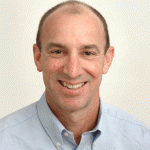Andrew J. Henderson, Ph.D.
Professor Medicine and Virology, Immunology & Microbiology
 650 Albany Street
650 Albany Street
Office: X645; 617-414-5240
Lab: X640; 617-414-3524
hender@bu.edu
andrew.henderson@bmc.org
B.S. University of California, Riverside
PhD University of California, Riverside
See BU Profile for additional information and publications.
My research focuses on cellular mechanisms that regulate HIV replication and transcription. Active projects in the lab include elucidating T cell costimulatory signal transduction cascades that positively and negatively regulate HIV transcription, determining mechanisms by which HIV circumvents anti-inflammatory signals to promote HIV replication and AIDS-associated inflammatory diseases and characterizing the transcriptional status of HIV provirus in T cell and macrophage subsets. Although, HIV is our primary experimental system, our research provides general insights into signal transduction, tissue-specific gene expression, immune cell function and mechanisms that contribute to inflammatory disorders and autoimmunity. Below highlights some of the current on-going projects in the lab.
T cell signals regulate HIV replication. T cell activation through the T cell receptor and costimulatory molecules, including CD28, influences susceptibility of T cells to HIV infection as well as proviral transcription. Incomplete T cell receptor signaling has been proposed to be a mechanism that contributes to proviral latency. We hypothesize that CD28 engagement results in distinct signaling cascades that have very different consequences for HIV transcription. We are actively characterizing signaling events emanating from critical tyrosine residues within the cytoplasmic tail of CD28 that either inhibit or induce HIV transcription to fully appreciate how costimulatory signals impact HIV transcription. In addition, we are characterizing the transcriptional machinery that regulates HIV expression in response to T cell signals. Understanding mechanisms by which CD28 regulates HIV transcription will further define pathways associated with this receptor as well as identify putative upstream signal transduction events critical for controlling HIV expression.
Related projects have suggested that non-receptor tyrosine kinases necessary for T cell activation and function, such as the Src kinase Lck and the Tec kinase Itk mediate efficient release of HIV. The mechanisms by which these kinases influence these late steps of HIV virus replication are actively being studied.
Regulation of HIV transcription elongation. HIV provirus is regulated at the level of transcription and involves changes in transcription initiation, chromatin organization and elongation. In particular, transcription elongation has been demonstrated to be a limiting step for HIV expression and overcoming this block is the primary activity of the viral factor Tat, which through the recruitment of P-TEFb to the LTR, post-translationally modifies RNA polymerase II and associated factors to increase processive transcription. Whether this initial lack of RNA polymerase II processivity represents proximal paused RNA polymerase II, premature termination, or both has not been resolved. Recent work from our lab shows that negative elongation factor NELF and the transcription termination factor Pcf11 repress HIV transcription. We hypothesize that the coordinate control of RNA Polymerase II activity and premature transcription termination coupled with chromatin changes create key check-points for HIV transcription that directly contributes to proviral transcriptional latency. In addition, we posit that there are cellular signals that extinguish HIV expression by inducing promoter proximal pausing and premature termination. Using a receptor tyrosine kinase that represses HIV expression, we are mapping signaling pathways that are upstream of transcription initiation, elongation and termination. Understanding the regulation of HIV transcription elongation will provide novel cellular targets for controlling and purging HIV in different cellular reservoirs.